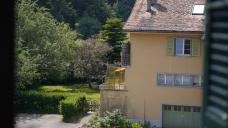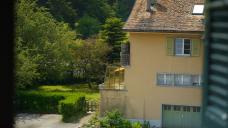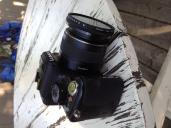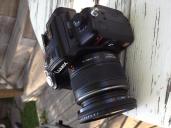
It allows to keep PV going, with more focus towards AI, but keeping be one of the few truly independent places.
-
If you use any polarizer under daylight, the colors are changed, since skylight is partially polarized. I'd expect it to be warmer, since some blue gets suppressed in the shadows or on slightly glossy surfaces like the roof.
If you want a neutral test, compare under controlled artificial lighting.
-
I want to buy this: http://www.filmtools.com/tiffen-77mm-indie-plus-hv-kit-w77indndpkt.html
But the problem is I can't find any selling in Eu, ordering from US gets too expensive (import tax etc ...)
-
@Swiss_Boy Hi thanks for the test, I have been looking at lot at this Marumi Filter for some time but had no feedback and test on it on the internet. From your test there seems to be quite a difference. The image with the filter seems to be warmer and ... strangely less contrasty. The highlight seems to be tamed. My only explanation is that it is the polarizing effect producing that. In fact it is not bad, some would say a more organic look. In terms of sharpness it seems a little less sharp even if you factor in the difference in contrast. I think a little sharpness in post could put them on par for those that like very sharp image.
If ever you have time it would be very nice to do some example as above at different ND level to see about any colour cast and usable range. The second thing is longer focal length like at least 100 mm, because most of the time this is where the image get softer. These two are the main problem in those Fader ND filters. I am getting fed-up by the internet scam of these pseudo review site that are just there to get referral money and advertising. This name brand filter could be the first good affordable Fader ND to the mass.
-
@thepalalias i just received the Marumi 58 mm Fader ND2-ND400 filter here is a test with and without filter with the olympus 45mm it's changing the colors a little bit but i must say i am very happy with the result the highlights are repaired.

 Sequence 01.Still001.jpg1920 x 1080 - 1M
Sequence 01.Still001.jpg1920 x 1080 - 1M
 Sequence 01.Still002.jpg1920 x 1080 - 1016K
Sequence 01.Still002.jpg1920 x 1080 - 1016K -
The difference is striking using these with the @LPowell flowmotion patch!!!
These are the listings for the filters from filmtools:
These are all out of stock:
Shane Hurlbut's kits:
http://www.filmtools.com/tiffen-77mm-indie-neutral-density-kit-w77indndkt.html
http://www.filmtools.com/tiffen-77mm-indie-plus-hv-kit-w77indndpkt.html
Tiffen special DSLR IR cut-off filters:
http://www.filmtools.com/tiffen-77mm-indie-pro-irnd-kit-w77indprokt.html
http://www.filmtools.com/tiffen-77mm-indie-standard-irnd-kit-w77indstdkt.html
This one is in stock:
http://www.filmtools.com/tiffen-77mm-indie-upgrade-irnd-kit-w77indugkt.html http://www.bhphotovideo.com/c/product/729157-REG/Tiffen_W77INDUGKT_77mm_Indie_Upgrade_Infrared_Neutral.html Adorama has some singles in stock, but it is cheaper to get a kit!
The main difference is Shane Hurlbut's kits have no IR blocking function at all.
-
I have a 62mm Heliopan Vario ND with a step down adapter to 46mm (to fit the 25mm and 14mm primes). Purpose is for filming snowsports (mostly snowmobiling) where the snow can be "blindingly bright". I'm happy with it, but I only make home movies and have nothing to judge it against.

 gh2 25 heliopan A.jpg3264 x 2448 - 2M
gh2 25 heliopan A.jpg3264 x 2448 - 2M
 gh2 25 heliopan C.jpg3264 x 2448 - 2M
gh2 25 heliopan C.jpg3264 x 2448 - 2M -
@bubba Not to nitpick, but stacking 3 traditional ND filters cuts 99.999% of IR, 57.8125% of near-IR, and 31.8528% of the red spectrum.
The math goes like this, taking near-IR as an example: 100%-[(100%-25%)^3], or 1 - .75^3.
Of course this is still only an approximation using somewhat-arbitrarily designated categories, but it is more accurate than adding percentages.
-
The reason I (and many others) use stacked ND filters is cut the amount of light entering the sensor ...as to be able to use larger apertures in stronger light.
Traditional ND filters have IR blocking included in each filter ...and the best of these cut 99% of the IR, 25% of the near-IR, and 12% of the red spectrum. Stacking 3 of these filters, cuts 100% of the IR, 75% of the near-IR, and 36% of the red spectrums.
No IR filtration can be exactly linear. In this example, losing 36% of your red spectrum is what results in Muddy images.
Tiffen has developed a line of ND filters (mentioned by @danyyel) especially for indie and budget film makers. As Indies commonly use stacking of ND filters to decrease depth of field with dslr cameras, the Indie line also includes several ultra-high density ND filters, as well.
I stay with the Tiffen Indie filter line ...because pundit or promoter of vari-ND filters ...muddy images cannot be corrected in post.
-
Very interesting review http://www.benjaminmoritz.com/2011/03/1074 of the genus and sing ray. In the end I think that for narrative work better go with some traditional ND, even the sing ray is not that good.
I am thinking about this set http://www.bhphotovideo.com/c/product/729107-REG/Tiffen_W77INDNDKT_77mm_Indie_Neutral_Density.html that shane hulburt reviewed to be very very good. They might not be as practical as vari nd but in the end you are not going to loose sharpness, have vignetting, color shift and cross type banding that most if not all exhibit at least one of these problems.
-
They do not interfere with AF system of mirrorless cameras using contrast AF, like all Panasonic cameras. With DSLR you can have linear polarizers affecting AF, yep.
-
Is there any indication that Variable ND or Pola filters interfere with the GH2 autofocus system?
-
I'm using a Genus ND and don't have any issues. Color and IQ are good.
All my filters are 77mm and do have issues with the step up adapters on faders. For some reason they all get stuck on the filter at some point and are impossible to remove without destroying the ring. (Yes, I have filter wrenches.)
-
I use the 77mm Singh-Ray Vari-N-Duo... Outdoors in daylight with most 8 bit digital low dynamic range cameras, a polairzer is a must, and this filter has both a vari-nd filter as well as another circular polarizer built in, to bring back those sky highlights and cut down on reflections. no color shifts or softness. yes its expensive but it really does justify the cost. I will post some samples that I shot recently.
Best Part is that it does NOT vignette on my Tokina 11-16mm lens at all. which was my biggest concern when purchasing it.
-
@Swiss_Boy @bheath Okay, just a quick response to you guys from my phone before I grab the laptop and head for the nearest Wi-Fi.
@Swiss_Boy Larger filters can be used on a wider variety of threads, so functionality wise it makes sense to get the largest you can afford. Of course the larger they are, the more expensive they get. My largest lenses use a 77mm thread so I tend to buy filters that size and use step-up rings for the rest. If you use a step-up ring with a larger filter, you also decrease the chance of vignetteting. Ofr instance, when I use a 52 to 77mm step up ring, I can fit 4 77mm contrast filters onto the lens without signs of vignetting on the Gh2 in standard 24H video mode. If I put 2 of the same filters on another lens on a 1.6x crop body, I can already see vignetting. It is not a scientific experiment (too many uncotrolled variables, like the lenses) but it gives you an idea of the potential.
@Bheath It is a great filter. I shot the partial eclipse with it using a Canon 100-400mm L series. Gorgeous.
-
@thepalalias thanks for the heads up on the hoya 9 stop. Like shooting through a brick, eh! It should be fun to try some mnotion things wiht the nokton 17 I just dug out my la 7200, (forgot I had one). Works well with the 17 voight. I wonder if an nd will work behind the adapter? Probably not. btw Still haven't tried that behind lens diffuser net... Have yet to try a fader ND
-
sorry I did not read this before:
Jow to order Heliopan Vari filter from a german site http://www.fotomayr.de
I don't know the german site, and I don't know how credible the ordering process is.
I know Fotomayr for many year since I was running my own E-6 film lab. Over all these years they were reliable and had a excellent service. I bought 2 Heliopan ND faders last year from there.
Howdy, Stranger!
It looks like you're new here. If you want to get involved, click one of these buttons!
Categories
- Topics List23,911
- Blog5,718
- General and News1,330
- Hacks and Patches1,148
- ↳ Top Settings33
- ↳ Beginners254
- ↳ Archives402
- ↳ Hacks News and Development56
- Cameras2,342
- ↳ Panasonic984
- ↳ Canon118
- ↳ Sony154
- ↳ Nikon95
- ↳ Pentax and Samsung70
- ↳ Olympus and Fujifilm98
- ↳ Compacts and Camcorders295
- ↳ Smartphones for video96
- ↳ Pro Video Cameras191
- ↳ BlackMagic and other raw cameras116
- Skill1,959
- ↳ Business and distribution66
- ↳ Preparation, scripts and legal38
- ↳ Art149
- ↳ Import, Convert, Exporting291
- ↳ Editors190
- ↳ Effects and stunts115
- ↳ Color grading197
- ↳ Sound and Music280
- ↳ Lighting96
- ↳ Software and storage tips266
- Gear5,407
- ↳ Filters, Adapters, Matte boxes344
- ↳ Lenses1,577
- ↳ Follow focus and gears93
- ↳ Sound496
- ↳ Lighting gear313
- ↳ Camera movement230
- ↳ Gimbals and copters302
- ↳ Rigs and related stuff271
- ↳ Power solutions83
- ↳ Monitors and viewfinders339
- ↳ Tripods and fluid heads139
- ↳ Storage286
- ↳ Computers and studio gear559
- ↳ VR and 3D248
- Showcase1,859
- Marketplace2,834
- Offtopic1,314











